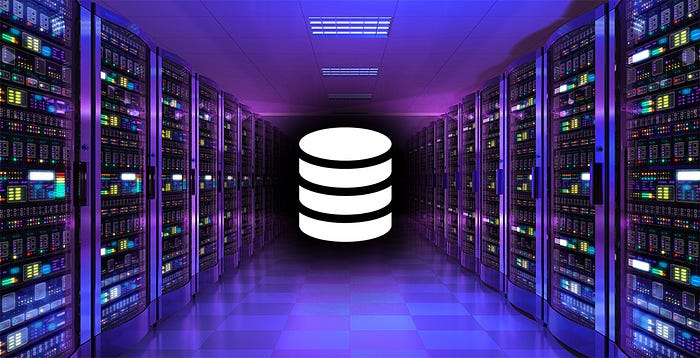A Comprehensive Guide to 15 Common Types of Databases and Their Use Cases

Databases are foundational for storing, managing, and retrieving data efficiently in system design. Here’s a quick look at 15 common types of databases and their use cases:
1. Relational Databases (RDBMS)
Explanation: Relational databases structure data into tables of rows and columns, where each row has a unique key. They use SQL for defining, manipulating, and querying data, allowing for complex queries and ACID transactions.
Use Cases:
- Enterprise Applications: Manage comprehensive customer data, inventory, and employee records with data integrity and relationships.
- E-commerce Platforms: Handle detailed product catalogs, customer orders, and secure payment transactions.
- Banking: Ensure the reliability and consistency of financial operations with strong ACID properties.
2. Key-Value Stores
Explanation: These NoSQL databases store data as key-value pairs, offering fast retrieval of values using unique keys. They are highly scalable and available but may lack complex querying capabilities.
Use Cases:
- Session Storage: Manage user session information like preferences and shopping carts in web applications.
- Caching: Implement caching to improve web app performance by storing frequently accessed data in memory for quick retrieval.
- Real-Time Data Processing: Quickly store and retrieve data for real-time analytics and event processing.
3. Document Databases
Explanation: Document databases store data in a semi-structured format, typically as JSON or XML documents. This allows for flexible schema design and fast read/write performance.
Use Cases:
- E-commerce Platforms: Manage product catalogs with varied attributes and user reviews.
- Content Management Systems (CMS): Store articles, user profiles, and comments as documents.
- Real-Time Analytics and IoT: Handle varied data from IoT devices and support real-time analytics.
4. Graph Databases
Explanation: These NoSQL databases represent data as graphs, with nodes, edges, and properties. They excel at managing interconnected data and complex relationships.
Use Cases:
- Social Networks: Manage user profiles and connections, enabling features like friend recommendations.
- Recommendation Systems: Analyze customer preferences to generate personalized product recommendations.
- Knowledge Graphs: Build interconnected data repositories for semantic searches and decision support.
5. Wide-Column Stores
Explanation: Optimized for storing large amounts of data, these NoSQL databases organize data into tables with flexible columns, suitable for distributed data storage.
- Use Cases:
- Web Analytics: Capture and analyze real-time event data like user activity logs.
- Real-Time Analytics: Aggregate and analyze data quickly for dashboards and alerting systems.
6. In-Memory Databases
Explanation: Store data directly in RAM for extremely fast access and low latency, bypassing disk I/O operations.
- Use Cases:
- Online Gaming: Manage user sessions and game state in real time.
- High-Frequency Trading: Handle a large number of financial transactions per second with minimal latency.
7. Time-Series Databases
Explanation: Specialized for time-stamped data, these databases handle sequences of data points collected over time intervals.
- Use Cases:
- Financial Trading: Track stock prices and trade volumes for trend analysis.
- IoT and Sensor Data: Collect and analyze data from IoT devices for smart home and industrial automation.
- Performance Monitoring: Monitor system metrics over time for capacity planning and anomaly detection.
8. Object-Oriented Databases
Explanation: Store data as objects, encapsulating both data and behaviors, mirroring object-oriented programming languages.
- Use Cases:
- Object-Oriented Applications: Seamlessly persist objects without conversion to a different format.
- Multimedia Databases: Store and retrieve multimedia items like images and videos with associated behaviors.
9. Text Search Databases
Explanation: Designed for efficient storage, indexing, and retrieval of large volumes of text data, enabling fast and scalable search capabilities.
- Use Cases:
- E-commerce: Enable product searches within online stores using descriptions and reviews.
- Web Search: Power search engines to index and retrieve relevant web pages.
- Log Analysis: Index and search large volumes of log data for troubleshooting and monitoring.
10. Spatial Databases
Explanation: Store and analyze geographical or spatial information, handling complex spatial data types like points, lines, and polygons.
- Use Cases:
- Geographic Information Systems (GIS): Map and manage data related to places for urban planning and environmental management.
- Location-Based Services: Provide services based on user location, like mapping routes and finding nearby amenities.
- Logistics and Transportation: Optimize routes and track vehicle movements.
11. Blob Datastores
Explanation: Designed for storing and retrieving large blocks of unstructured data, such as images, audio, and videos.
- Use Cases:
- Content Delivery Networks (CDNs): Store and deliver large media files globally.
- Big Data Storage: Manage large datasets for analytics and processing pipelines.
- Backup and Archival: Provide scalable solutions for storing backup data and long-term archives.
12. Ledger Databases
Explanation: Provide an immutable, append-only record of transactions, ensuring data integrity and transparency.
- Use Cases:
- Supply Chain Management: Track the movement of goods for transparency and traceability.
- Healthcare: Manage patient records with a clear, unchangeable history.
- Voting Systems: Ensure the integrity and transparency of voting results.
13. Hierarchical Databases
- Explanation: Organize data into a tree-like structure with one-to-many relationships, popular in early computing for file systems.
- Use Cases:
- Organizational Structures: Manage data in hierarchical charts.
- File Systems: Store directories and files in a hierarchical manner.
14. Embedded Databases
Explanation: Integrated into software applications, offering fast data access and small footprint without a separate server process.
Use Cases:
- Gaming: Save game states and player progress within the application.
- Desktop Applications: Store configuration settings and user preferences locally.
When choosing a database, consider your specific use case, data model, scalability needs, and budget to select the best fit.
That’s it!. Feel free to follow me and share your thoughts on what else I can improve.
Do checkout the my complete ongoing series on System Design —
jaspreetsodhi02.medium.com/list/system-design-series-f5054fed26fd
See you in the next part! 😊
